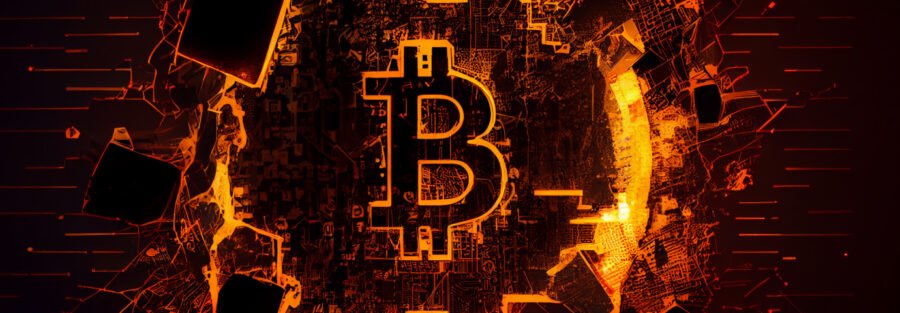As Bitcoin network fees increase and congestion builds, the rise of BRC-20 tokens and Ordinals NFTs has sparked a debate within the crypto community: should Bitcoin limit or even ban these new technologies? The direction this discussion takes could significantly impact the future of Bitcoin.
On March 9, 2023, Domo, an anonymous on-chain analyst, announced on Twitter a theoretical concept of BRC-20, ERC-20-like tokens on the Ordinals protocol.
Things remained cool until early April when the number of Ordinals inscriptions skyrocketed, and Bitcoin network fees began surging exponentially. In May, the fees soared to a high of $30. This made BRC-20 tokens and Ordinals major discussion topics in the Bitcoin community. In particular, how to deal with the new technologies.
Devs and maxis calling for BRC-20 and Ordinals censorship
The question is whether BTC should censor or ban those new technologies within its network. Some experts believe that the Bitcoin network should do away with BRC-20 altogether.
One of the specialists involved in the recent raging debate is Ali Sherief, a Bitcoin developer. Ali Sherief began a series of posts about the situation on Bitcoin in early May.
Sherief made bold claims that the Bitcoin network is facing a DDoS attack to bottleneck the network. He said that BRC-20 tokens are the mode of attack on Bitcoin.

Sherief continued his tweets, noting that anyone using the BRC-20 upgrades supports the network’s DDoS attacks. He mentioned that the BTC network is unusable because of the emergence of a “useless” class of assets. Sherief asked BTC developers to think of a possible solution.
Sherief argued that real BTC transactions are being priced out, and the “worthless tokens” affect Bitcoin’s normal use. In one of his briefs, he advised Bitcoin developers to stop any ordinal token mints through BIP improvements.
Interestingly, the recent improvements have triggered developments from some Bitcoin stakeholders. For instance, Luke Dashjr, a Bitcoin developer, spoke of spam filtration within the BTC network.

The developer created a spam filtration patch, Ordisrespector, to spot and reject Ordinal transactions. Dashjr also believes that actions on this should have been taken a long time ago.
According to Dashjr, the filtration of spam has been a key element of Bitcoin core since its first day. This filtration system was mistakenly omitted when implementing the recent Taproot upgrade. As such, Dahsjr believes that adding the filtration patch would solve a bug; hence is not necessarily censorship.
Eric Aronesty, a developer, also believes that changes must be made in the Bitcoin network.

Sharing a similar sentiment, a decentralization advocate Chris Blec appears to support the removal of what he calls “spam on Bitcoin.” Chris noted that limiting these technologies should not be considered censorship.
Ryan Berckmans, Ethereum community member, said that Bitcoin Core developers intend to kill the new techs, including BRC-20 and Ordinals.
Let the market decide
Some stakeholders believe the ultimate removal of BRC-20 and Ordinals on the network is unnecessary.
Michael Folkson, the developer and a KOL in the Bitcoin space, wrote that the network should not make any changes to censor the technologies. Folkson believes the market should deal with the issue of BRC-20 and Ordinals. He highlighted that although people might disagree with different BTC use cases, “consensus rules are set and the rest is left to the market.”
Will BRC-20 disappear?
Some experts believe the new technologies will disappear in months. Samson Mow, the CEO of Jan3, recently said that the ongoing hype on BRC-20 technology would fade.
According to Mr. Mow, the fee issue would be among the major triggers of the disappearance of the new techs. He mentioned that the fees served to miners could not be sustained in the long term.
Mow believes that Bitcoin’s mass adoption relies on two use cases, a means of exchange and a saving tech. In his opinion, the NFT/JPEGs application is not a good means to foster adoption.
Ordinals may cause another BTC fork
Another interesting discussion arising from the recent Bitcoin issues is the calls for reform on Bitcoin’s block size. This means increasing the storage size from 1MB to higher heights.
A crypto enthusiast called Crypto Texan highlighted the heated discussion within the Bitcoin community.
Crypto Texan said that this is merely a repeat of Bitcoin’s history. Some note that this could be a war between Bitcoin maxis and devs.
Many investors believe reforming the block size would mean the Bitcoin block could support even more transactions. These reforms could help cater to the recently increased load on the network.
For instance, if Bitcoin doubles the block size from 1MB to 2MB, each block can handle double the number of currently held transactions. If the block size increases, the blocks will store more transactions.
Most believers in block size reforms are Bitcoin maxis, miners, and large crypto networks. Other enthusiasts note that enlarging Bitcoin’s block size would make the network highly centralized. Only top mining companies would have enough power to deal with those massive blocks.
Interestingly, the debate on increasing Bitcoin’s block size has already been discussed in the past.
In 2017, the Bitcoin network passed a plan to reform the block size to handle more transactions and reduce transaction fees. However, the community largely disputed these reforms, all stuck with the original Bitcoin chain. The forked blockchain today is known as Bitcoin Cash, which now has an 8MB block size.
Improving the BRC-20 tokens?
Could Bitcoin maxis choose to implement forks that target improving the tokens? A developer John W Ratcliff recently noted that Bitcoin’s JSON format makes the network inefficient. Instead, the network could improve to use binary formats. He said the binary format would reduce BRC-20 size from about 90 to 19 bytes.
When creating the BRC-20 technologies, Domo anticipated that there would be improvements and optimizations with time. One of the solutions he mentioned was TARO (Taproot Asset Representation Overlay), created by Lightning Labs. The protocol would allow issuing assets on Bitcoin, but they will be immediately transferred to the lightning network. Other scaling solutions for the Bitcoin network include ZK-rollups, which process transactions by bundling them off-chain before validation.
In a heated debate around the BRC-20 tokens and Ordinals, the crypto community is considering various solutions, yet the future course for Bitcoin remains unpredictable.





